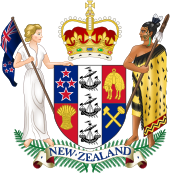Transport Licensing Act 1931
| Transport Licensing Act 1931 | |
|---|---|
 | |
| New Zealand Parliament | |
| Status: Repealed |
The Transport Licensing Act 1931 was a New Zealand Act of Parliament regulating land transport. It was introduced following a Royal Commission on road and rail competition in 1930. The Act also regulated aspects such as safety and insurance requirements for carriers and the regulation of public passenger services.
Amendments
In 1933, the Act was amended to cover all rural road carriers carting in excess of 5 miles (8 km). In 1939, town carriers were regulated.
Maximum distance protection
In 1936, the protection of railways was extended to cover all freight conveyed over distances greater than those specified by the Act. This was by far the most crucial regulation, as it gave rail an effective monopoly on long-distance freight transport. Originally this limit was 30 miles (48 km). In 1962 it was increased to 40 miles (64 km), and in 1977 to 150 kilometres (93 mi).
Repeal
The Act was repealed in 1982, effectively deregulating land transport and opening the railways up to competition. The Railways Department was corporatised as the New Zealand Railways Corporation as a result, and throughout the 1980s until the early 1990s lost substantial amounts of freight to road carriers. Freight traffic reached its low point in 1993, and since then railway freight traffic has increased.[1]
References
Citations
- ^ "New Zealand Freight Study" (PDF). Ministry of Transport. September 2008. Retrieved 16 September 2015.
